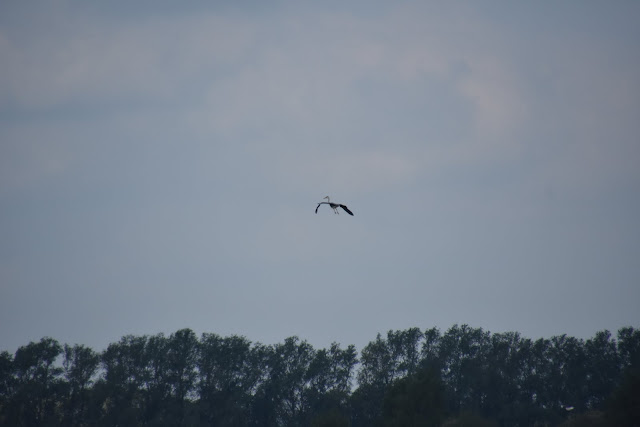After finishing most of my exams, and with nothing to do, I thought it would be a great opportunity to do something London and wildlife related. So, as part of an event which I had been looking forward to doing for a number of years, I visited four different gardens, as part of Open Garden Squares Weekend. This annual event allows the public to visit all sorts of gardens throughout inner London, most of which are private spaces.
My first stop was the Barbican Wildlife Garden (BWG), which I'd previously visited in February, and this is a garden with many brilliant, dedicated volunteers, who tend the garden in their spare time. It was wonderful to meet Jo, and a few other volunteers again, as well as Dorothy, the resident poet. The wildflower meadow was brilliant, and a surprise to find one in the City!
One of the two ponds in the Garden, which have been home to a number of Frogs this year
Feral Pigeons
A wildflower meadow-in the City!
Next, I headed to a rather unusual garden off Aldgate- Sir John Cass Primary School's Roof Garden. A spectacular garden with brilliant views of the City, it is wonderful to see that primary school children have planted vegetables and a variety of flowers, to allow themselves to engage with nature and for pollinators to thrive.
It was also great to talk to the City Gardener there too, who explained to me how the garden benefits the local area, and how the children use it.
Bumblebee pollinating
The Rooftop Garden has a wide variety of plants
The Garden has some amazing views- yet another oasis of life in the City
The Garden
Afterwards, I walked to the City/Tower Hamlets border, where it was wonderful to meet Nic Guerra again, who I'd previously met at the BWG in February, at his Secret Garden next to All Hallows by the Tower. He uses his garden as a home for plants rescued from development, government buildings and people's homes, and tends them, before giving them to local church groups, schools and other places, which I think is a great idea! His Secret Garden has many species of plants, native and non-native, and has a few resident Great Tits.
Nic's Secret Garden
Bicycle racks, old carrier bags and containers are used to give plants a home here!
Great Tit
Bumblebee
From Tower Hill Station, I took the Circle Line to King's Cross, and walked over the Regent's Canal, past the London Wildlife Trust's Camley Street Natural Park (closed for building works), and beside Lewis Cubitt Park. Within a secluded part of the King's Cross Central development, lay a very innovative and extraordinary garden- the Skip Garden. Yes, it is a garden, which produces a variety of local produce and a fantastic green space, through the use of rubbish skips. There is even a greenhouse constructed entirely from old windows from across London! The garden is the result of a local community creating a space for sustainable farming and wildlife, in a very unlikely way, and is an amazing example of what we should all do- creating something innovative and exciting, using basic resources.
The skips
An interesting way of enjoying a garden...
Lavender growing in the Herb Skip
A greenhouse made from windows-complete with a bat box
After visiting four inspiring gardens, I decided to walk by the Regent's Canal into Islington- an area where I'd mapped many wildlife sites, some of which I'd visit very soon...
Battlebridge Basin, on the Camden/Islington border and home to the London Canal Museum
A Coot nest!
Coot
A superb mural of the birds of the Regent's Canal, near Caledonian Road
I soon realised that I was near two wildlife sites, one of which was Barnsbury Wood LNR, London's smallest publicly accessible local nature reserve (the smallest is Burnt Ash Pond LNR in Lewisham, which has limited access). Unfortunately it had shut an hour before, so I visited Thornhill Square instead, the other wildlife site. It's been wonderful exploring hidden oases throughout the inner city, and I hope to visit them next year too! However, all green spaces should be enjoyed by everyone, all the time.
Woodpigeon
Blackbird
Another interesting garden at Caledonian Road & Barnsbury Station







































